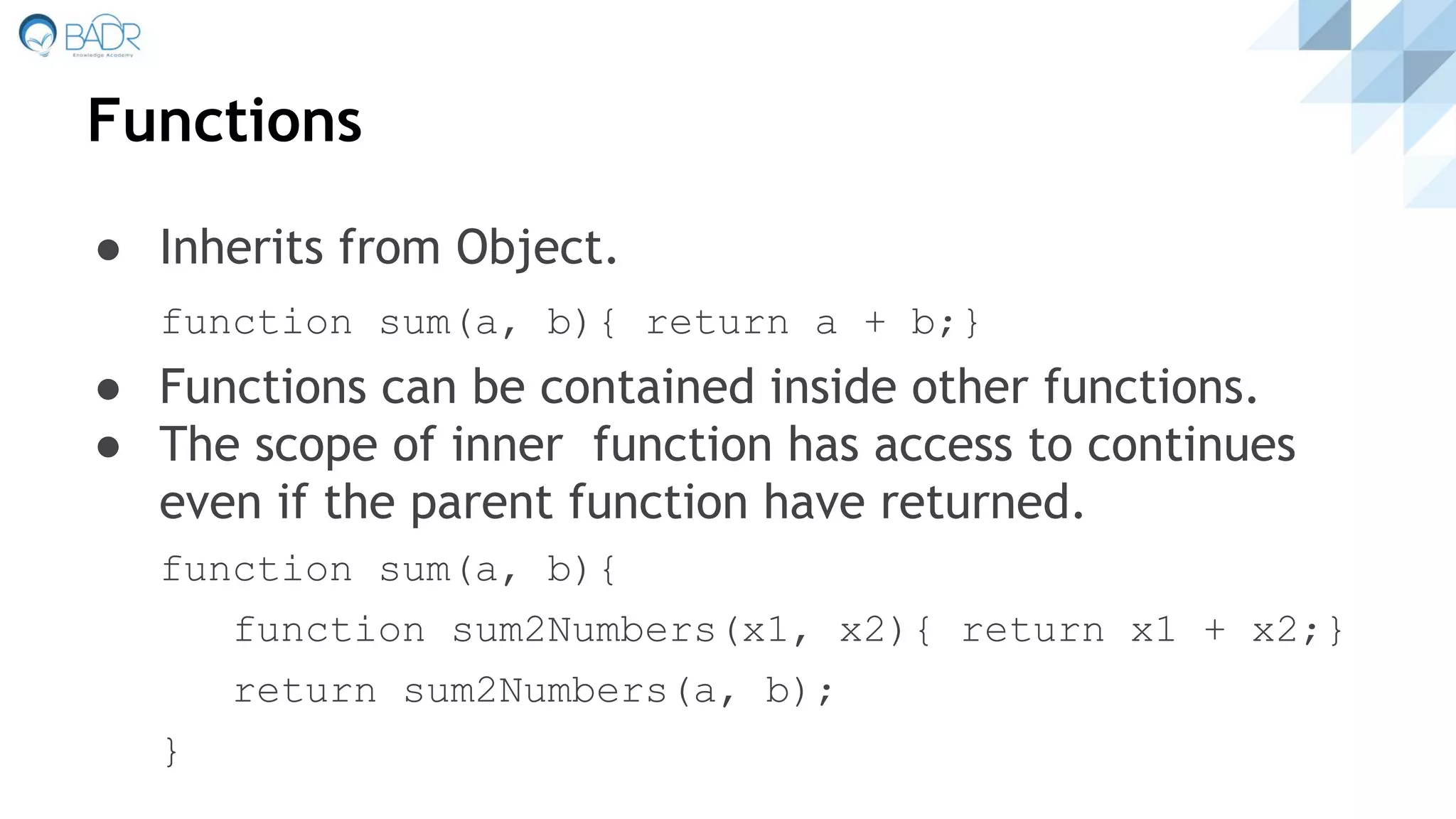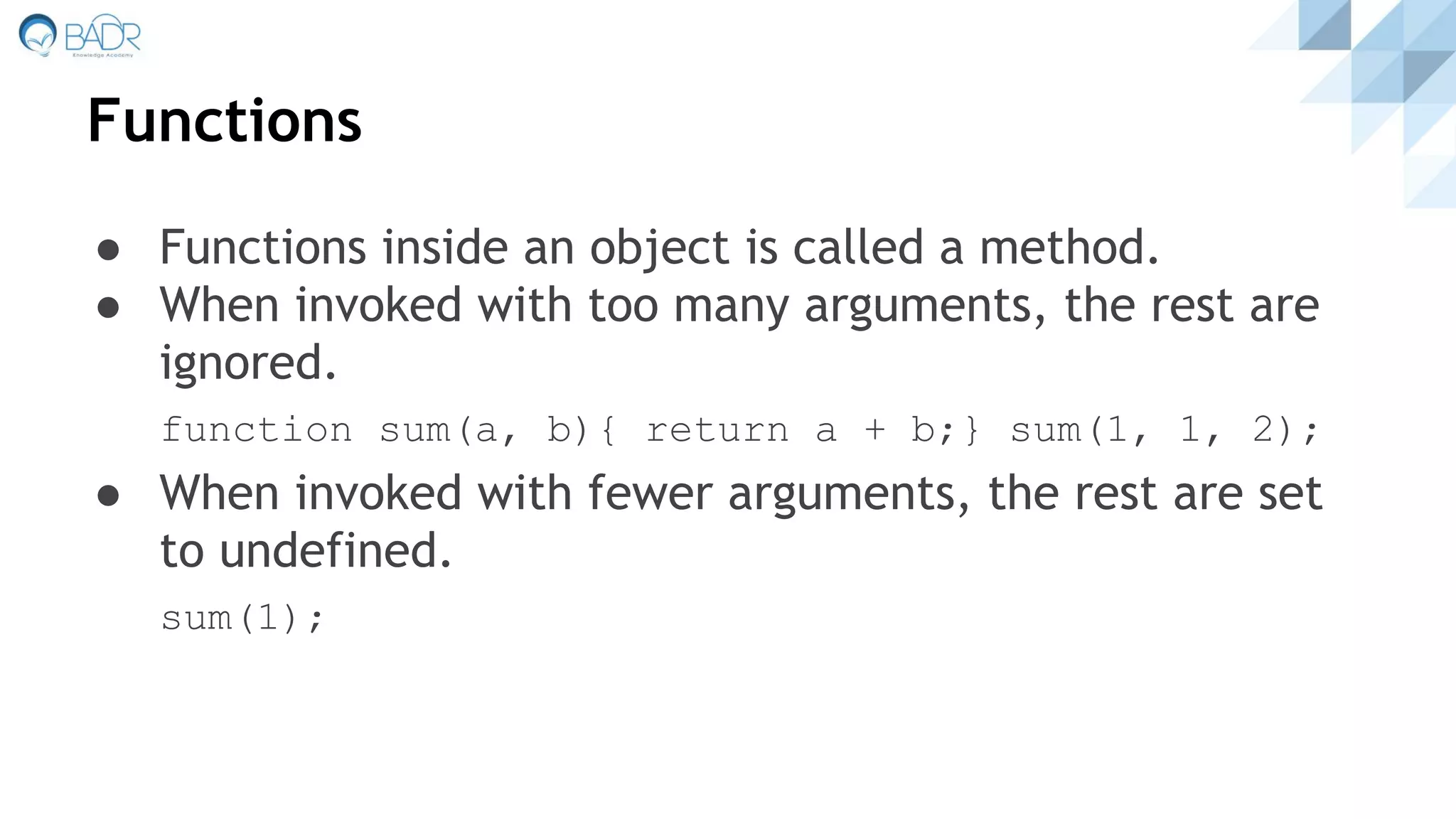This document provides an introduction and overview of JavaScript. It begins by introducing the author and stating that JavaScript was originally created in 1995 for web pages. It then discusses that JavaScript is an object-based, interpreted programming language used to control HTML and dynamically create web pages. The document goes on to explain how to write and embed JavaScript code using script tags, and covers JavaScript data types, variables, objects, built-in objects like Math and Date, arrays, functions, and more.

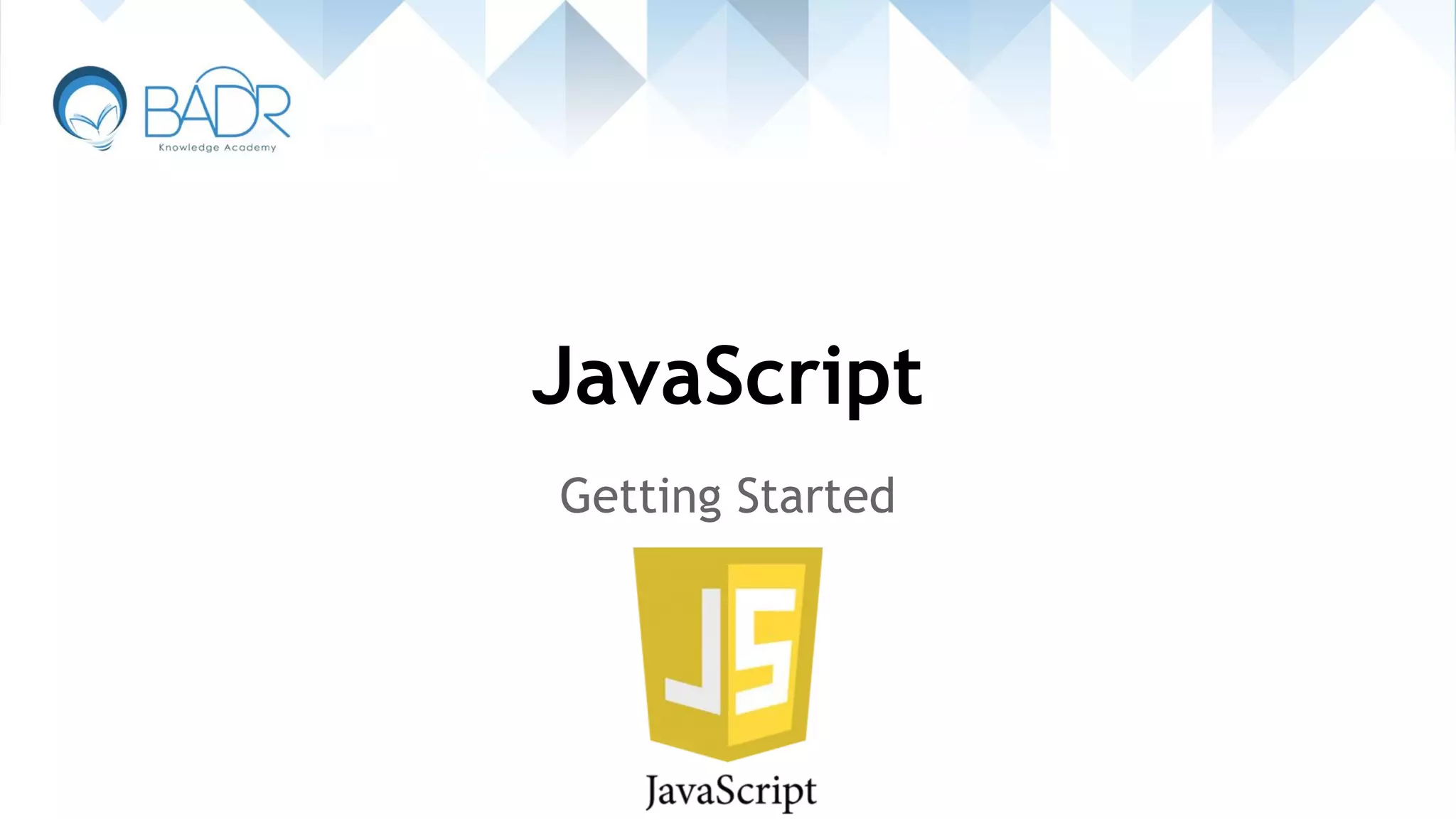

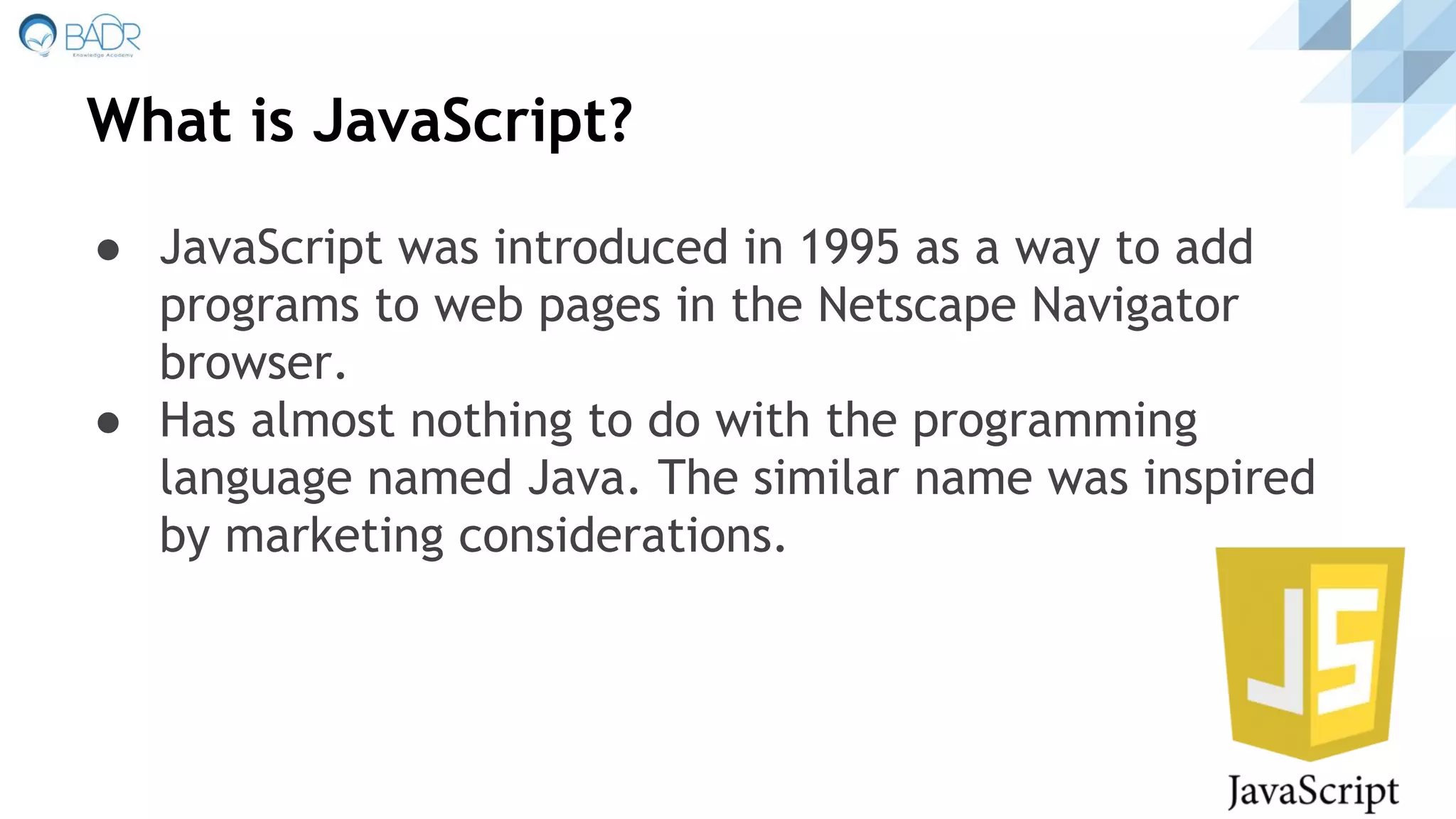
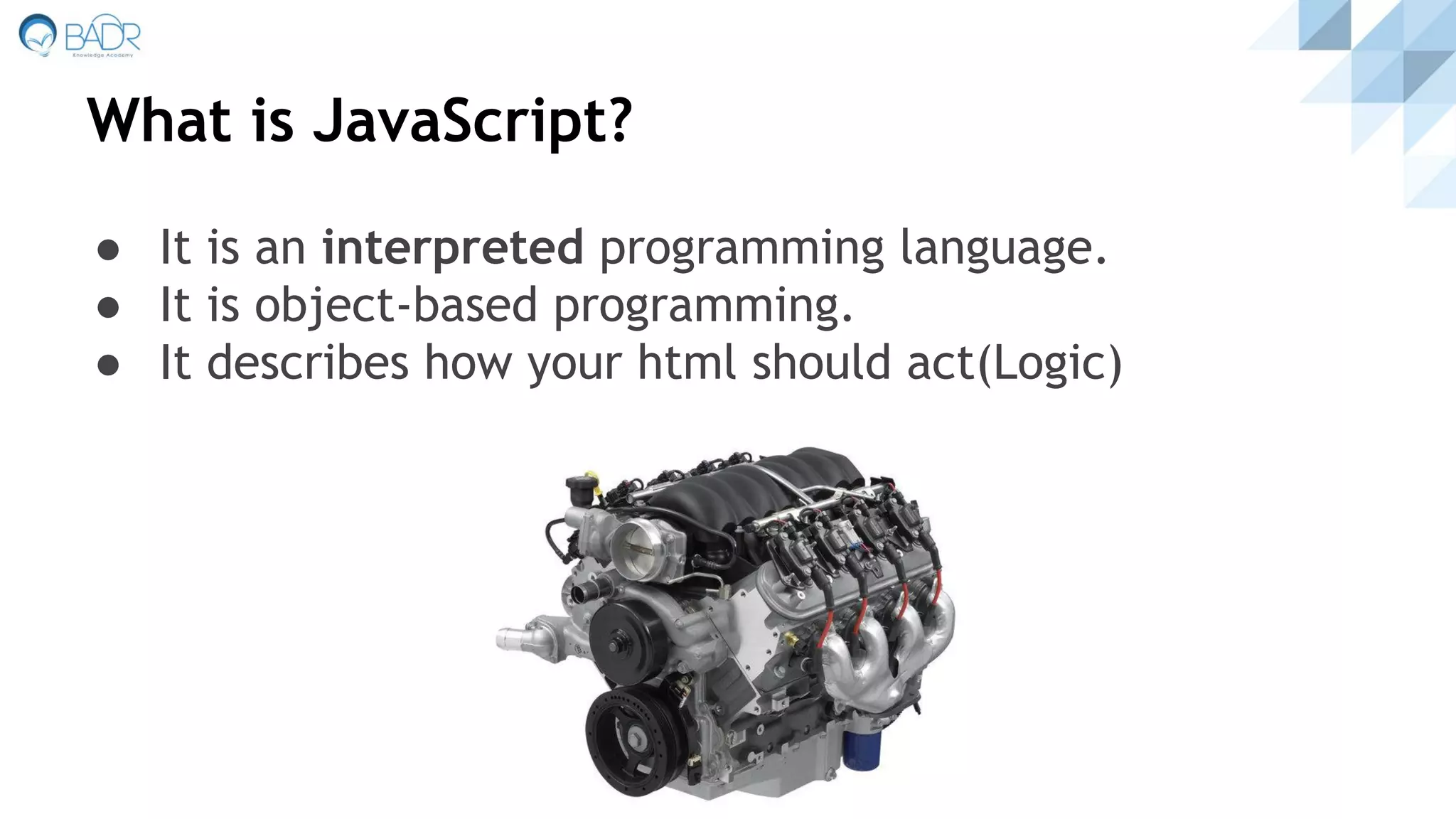
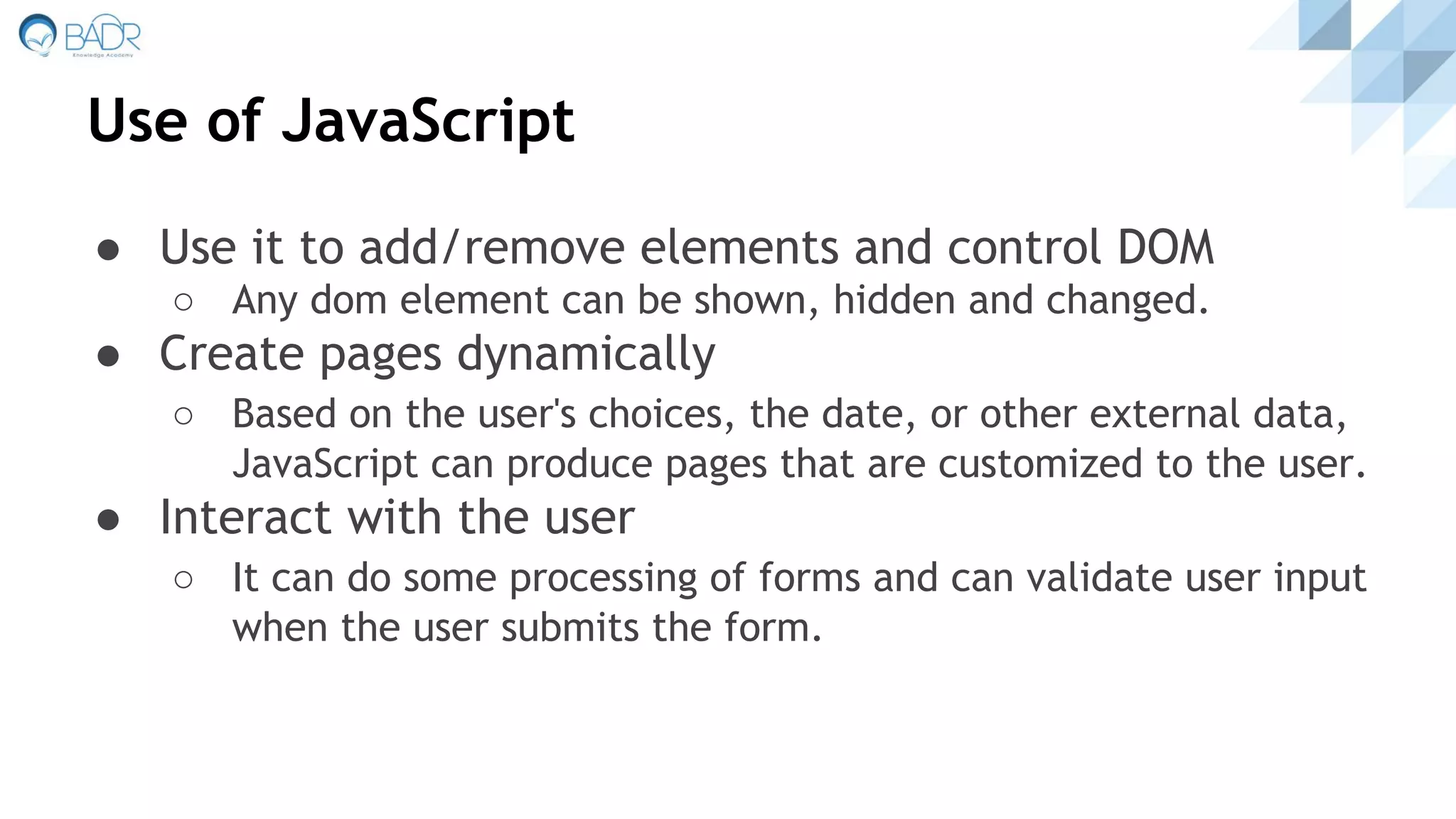
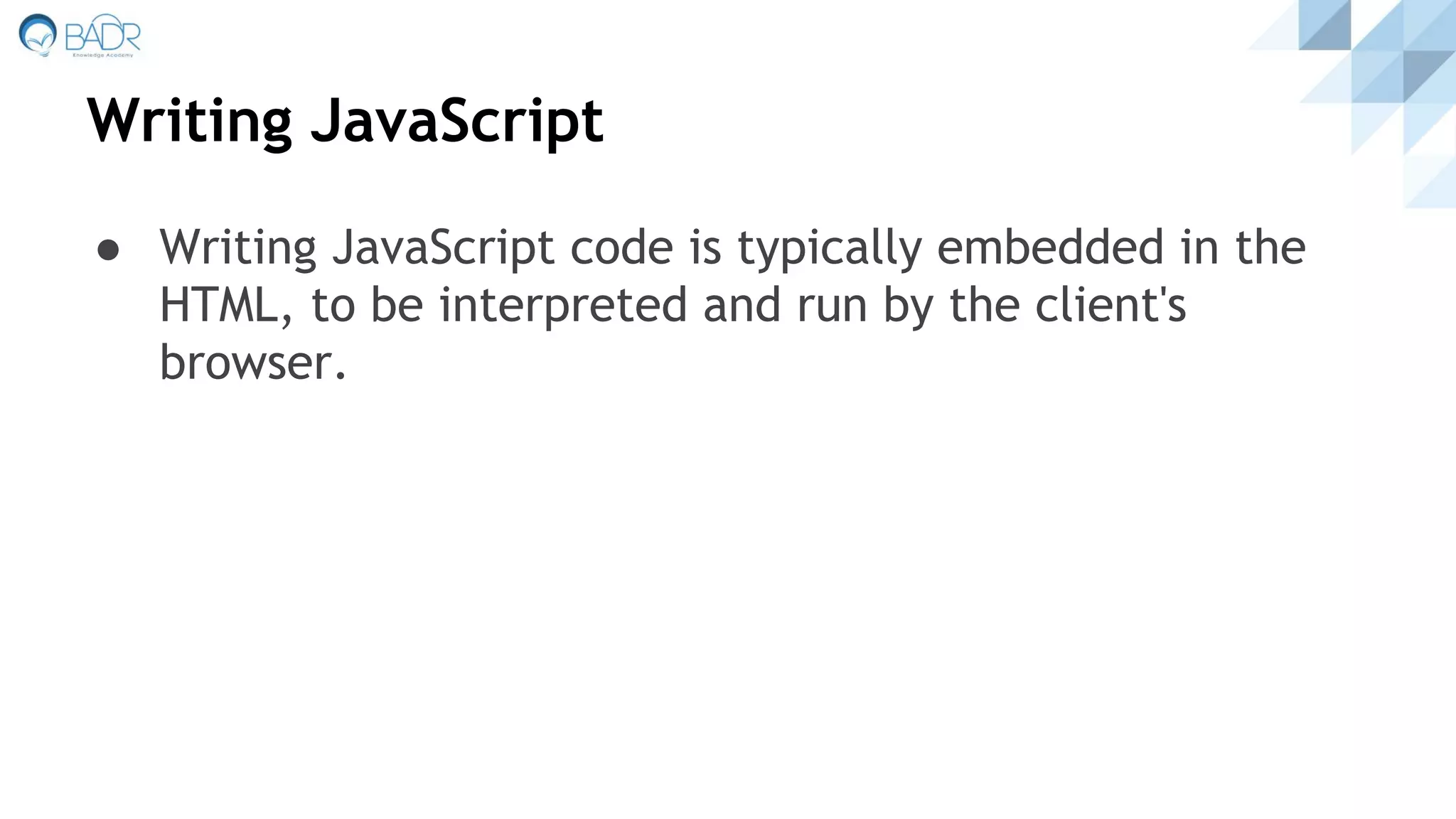
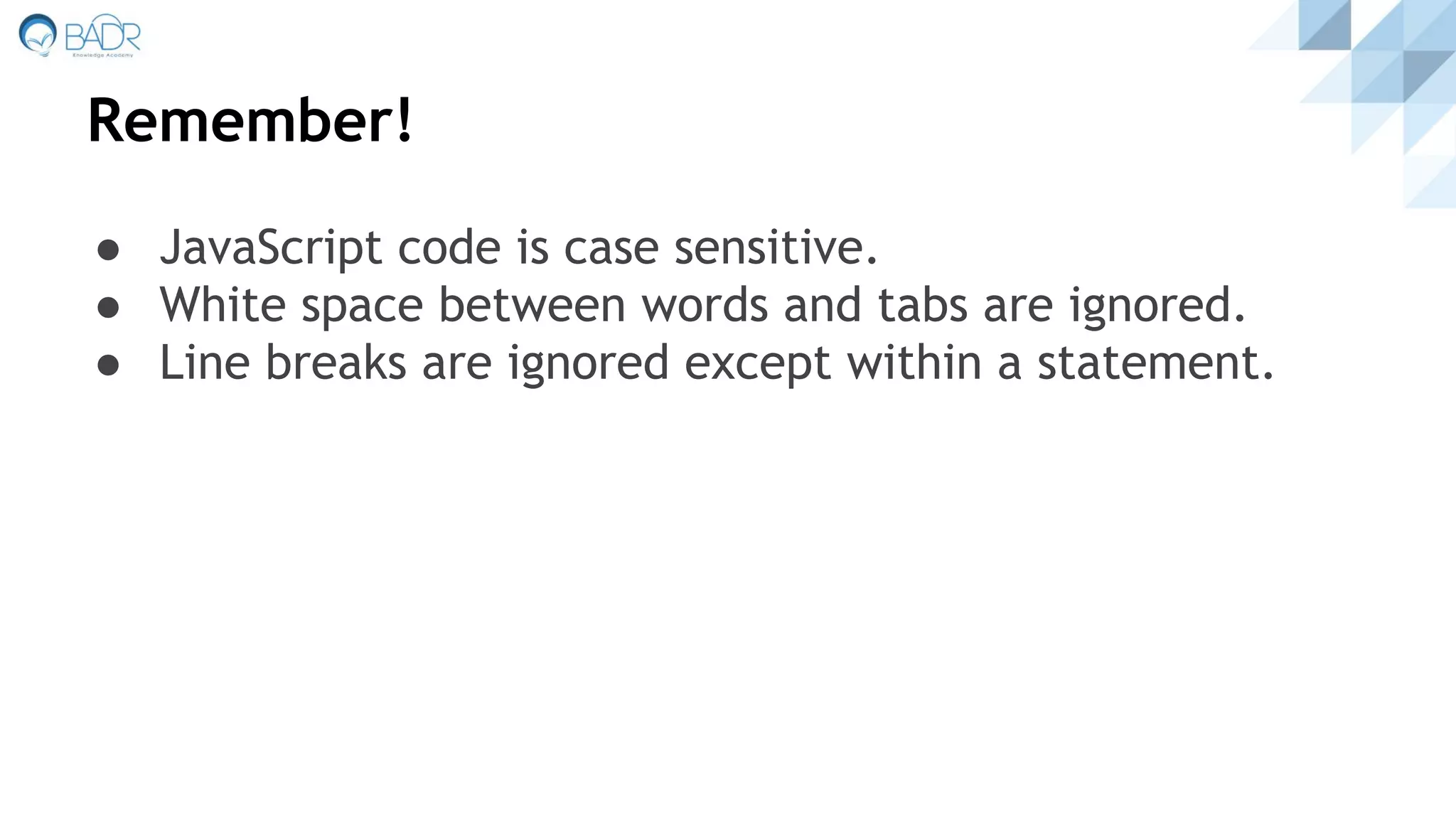
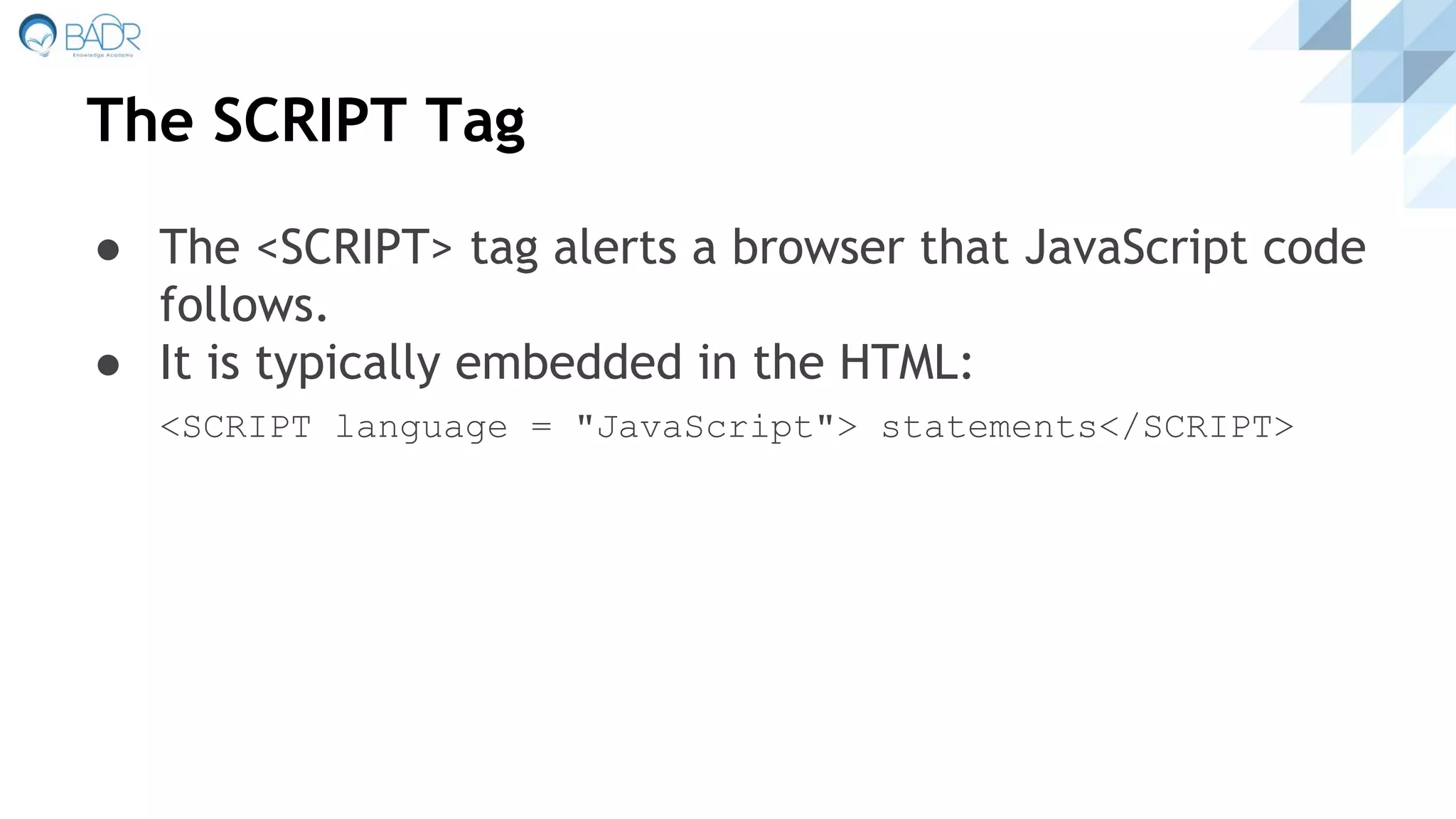
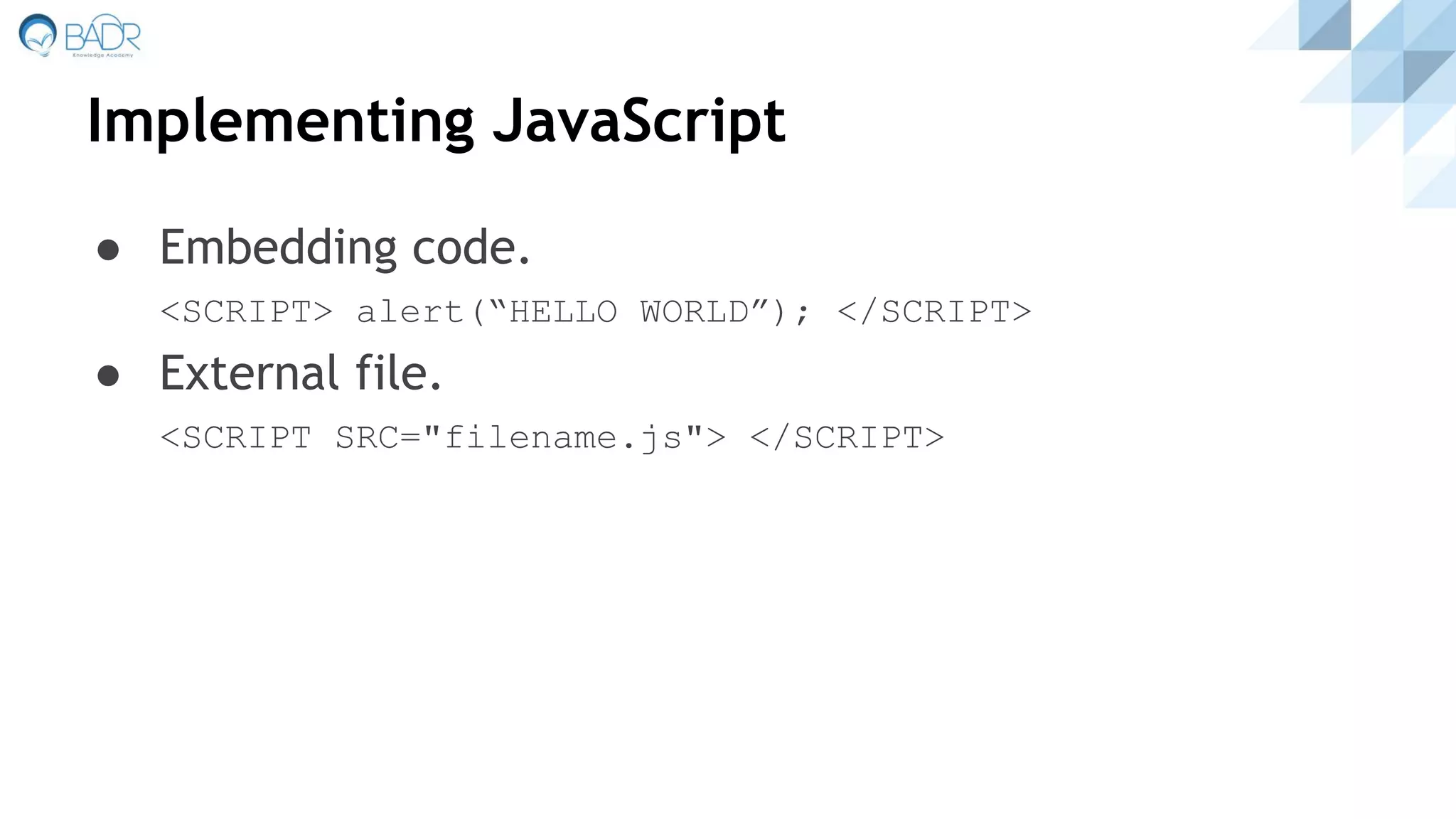
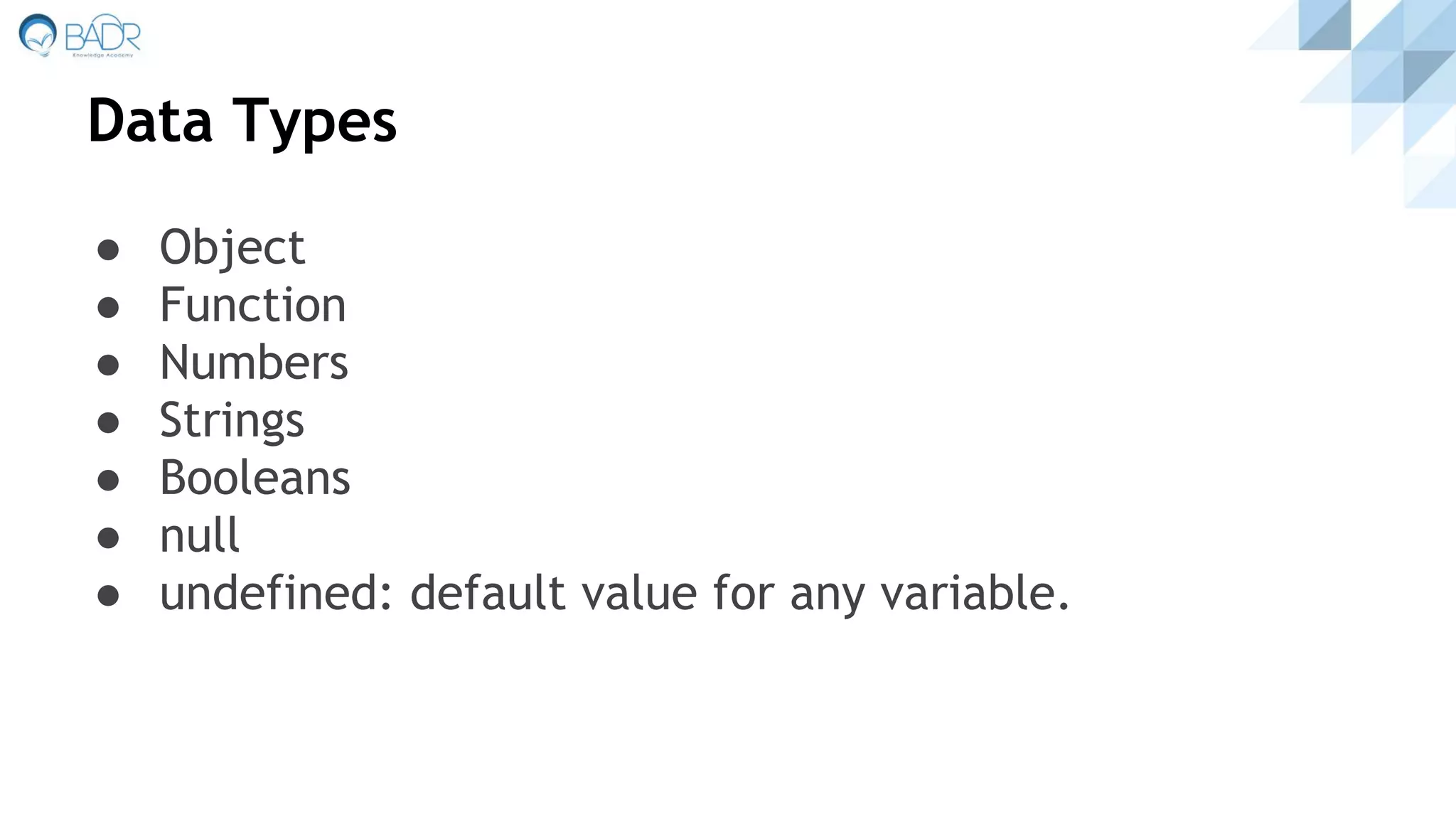
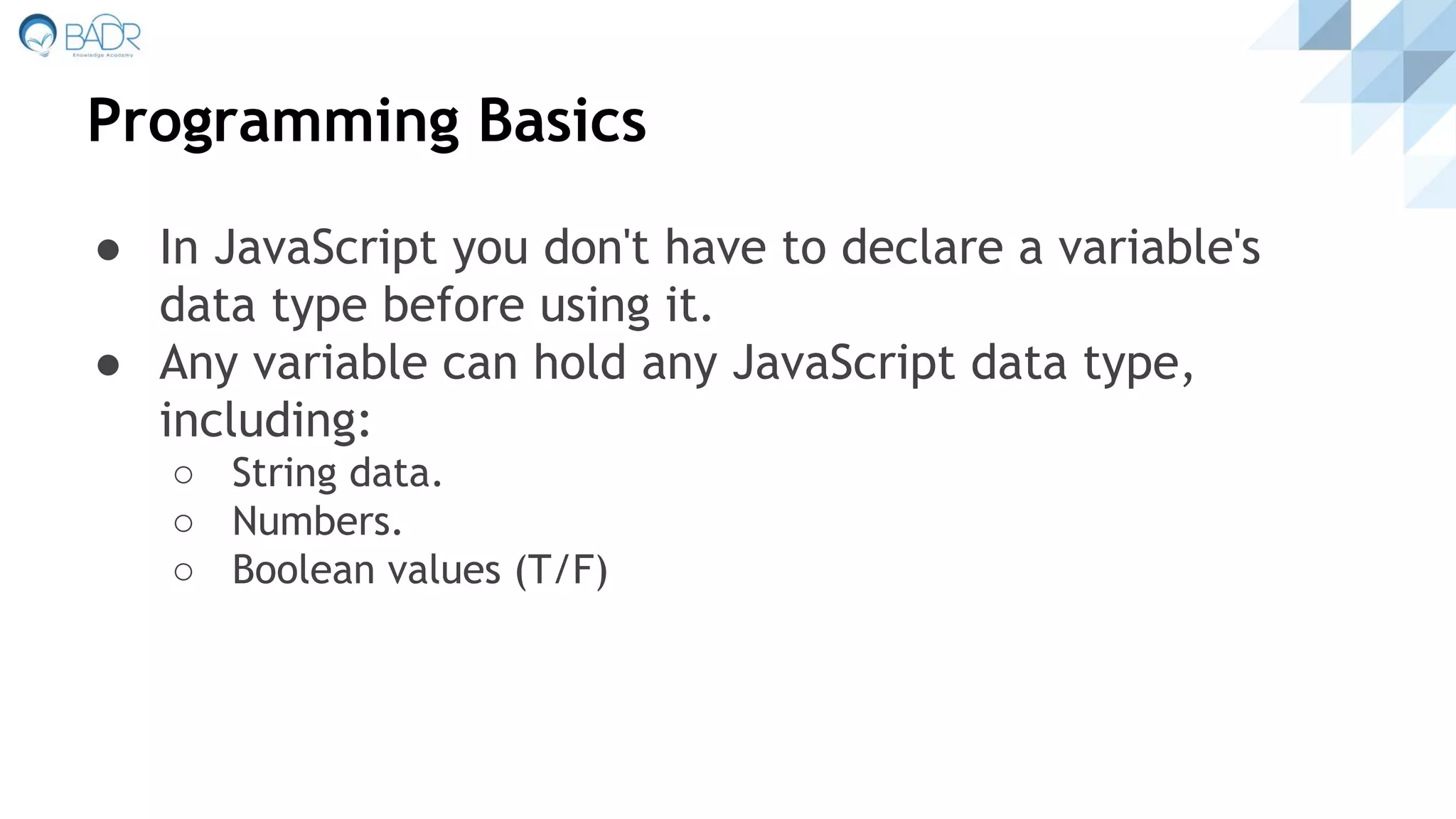
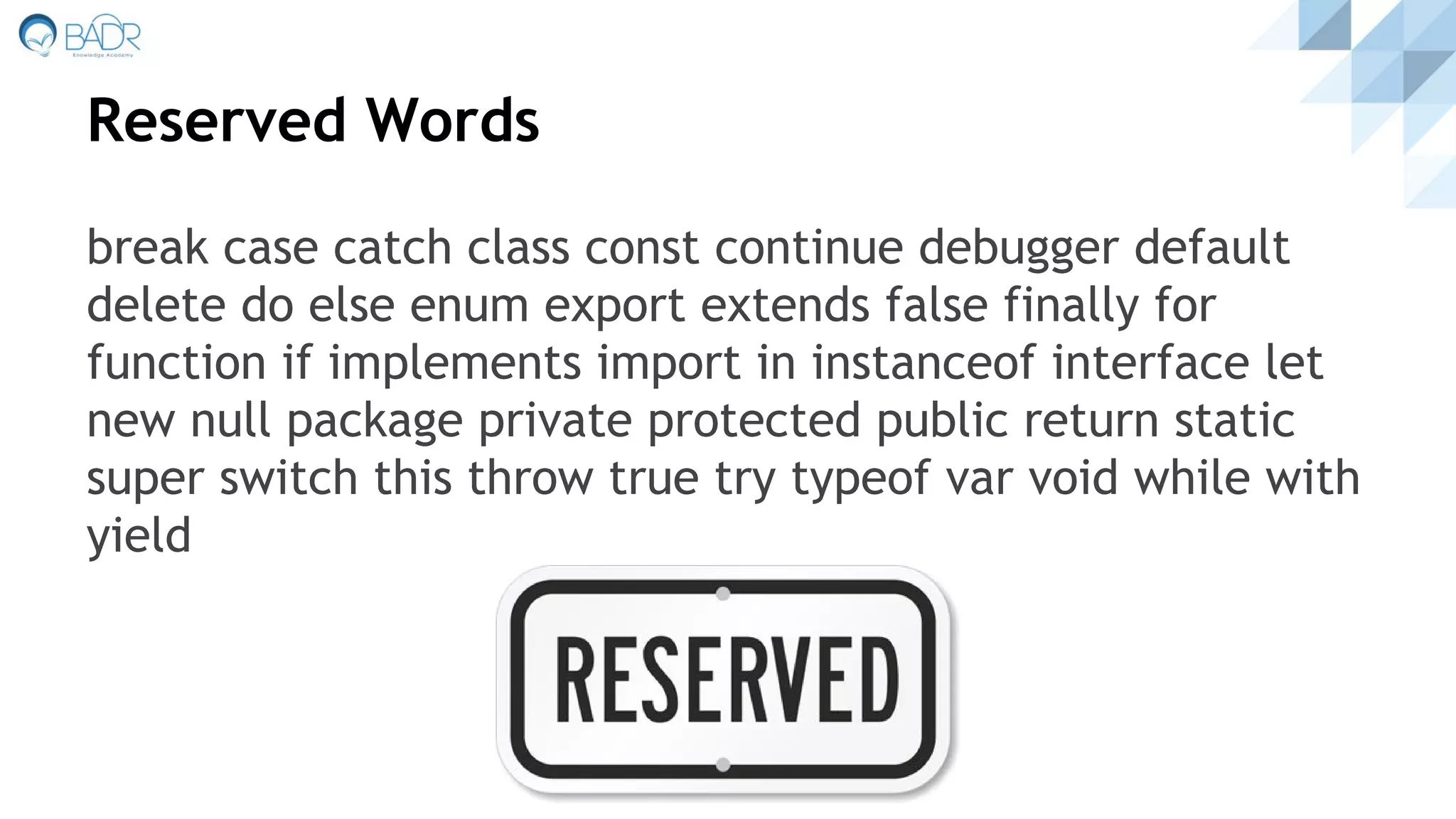
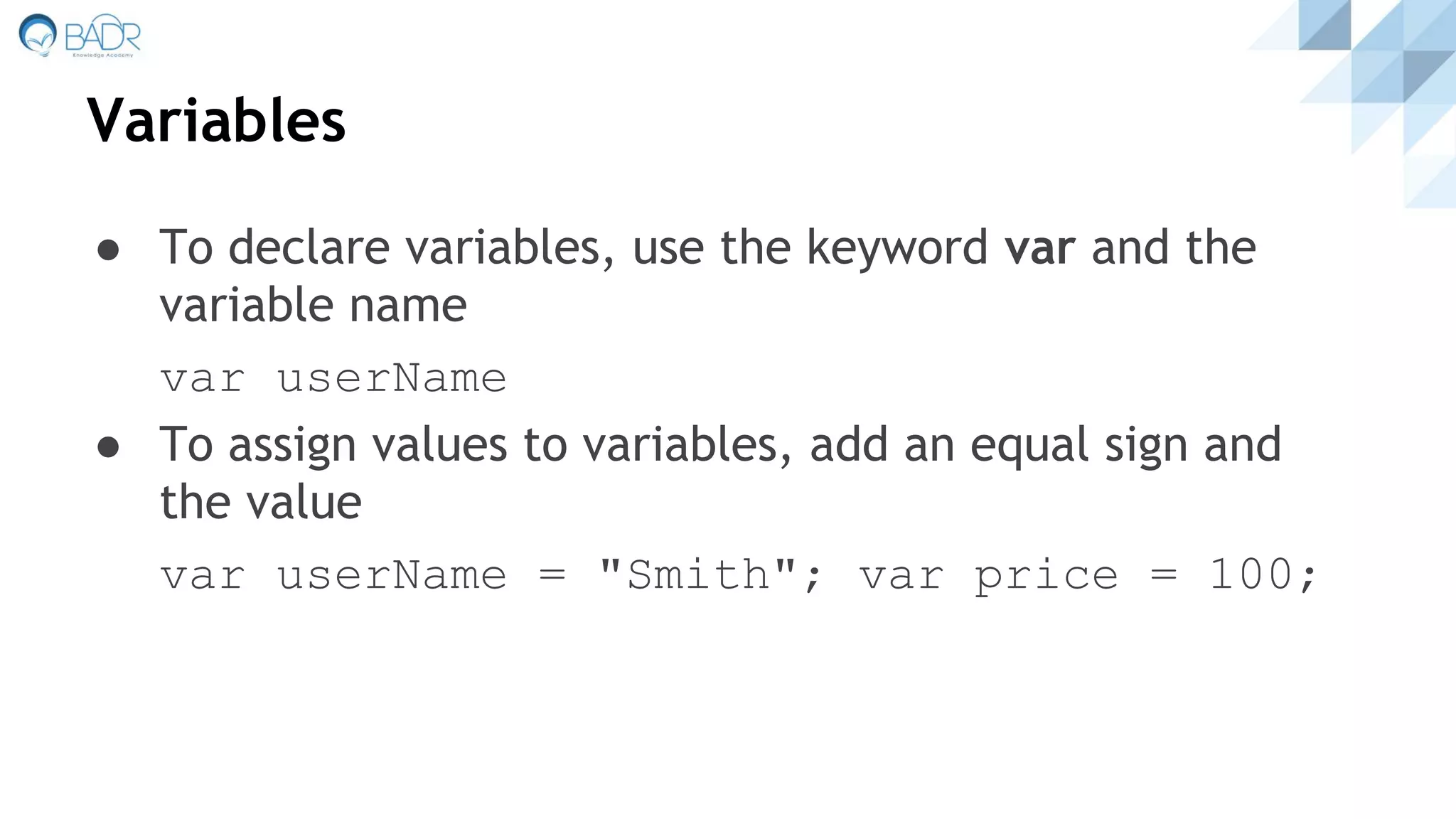
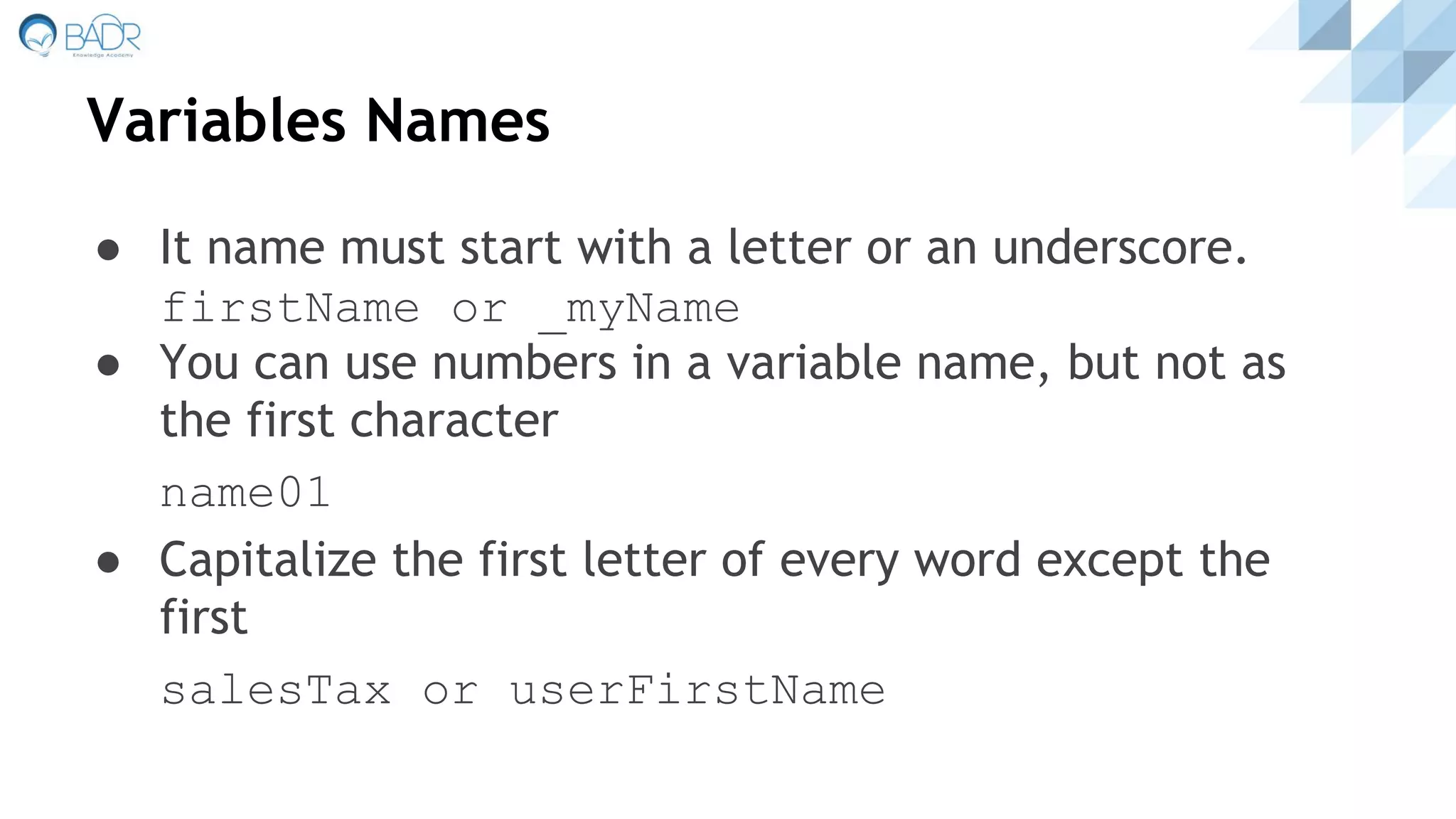
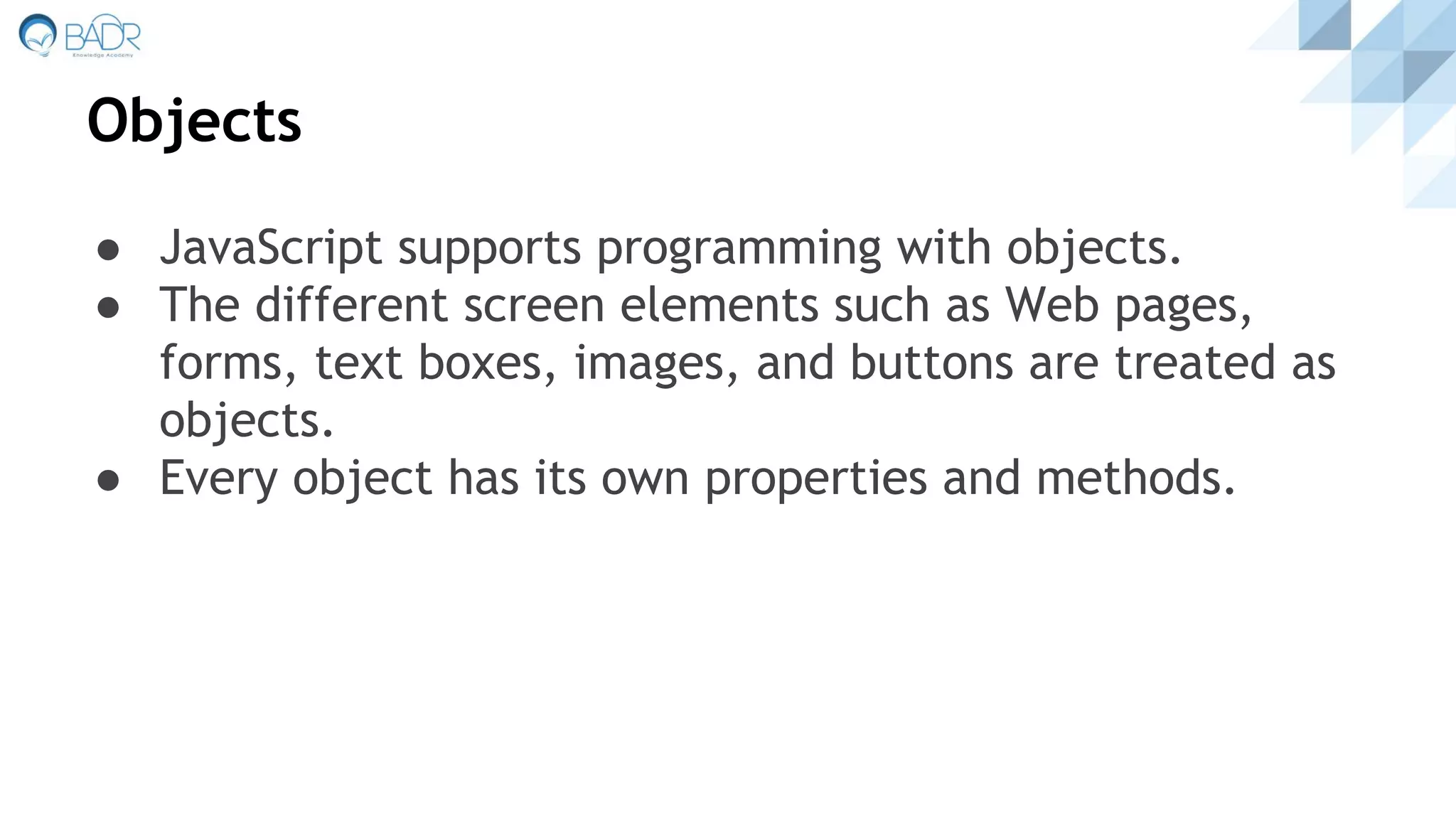
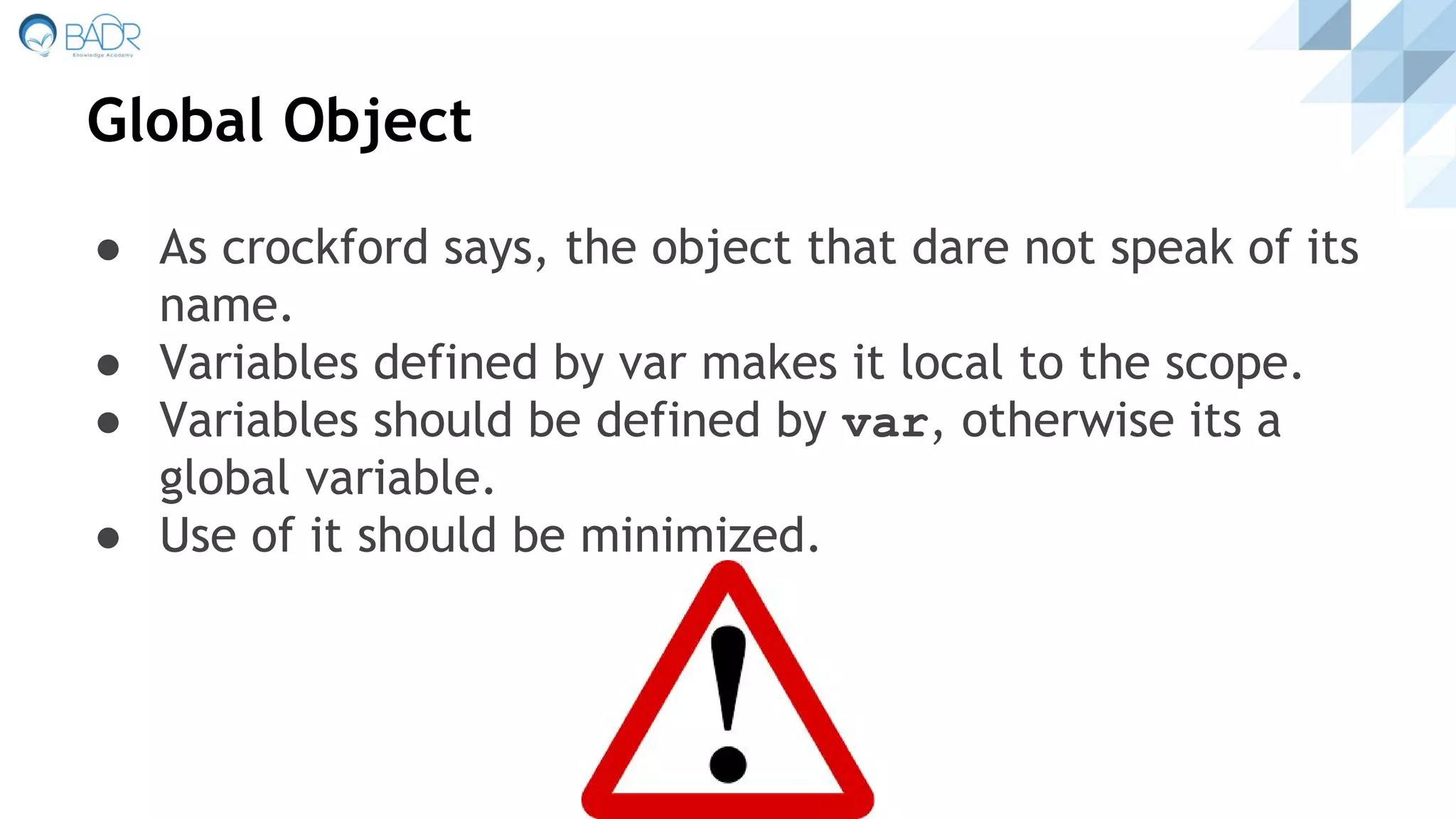
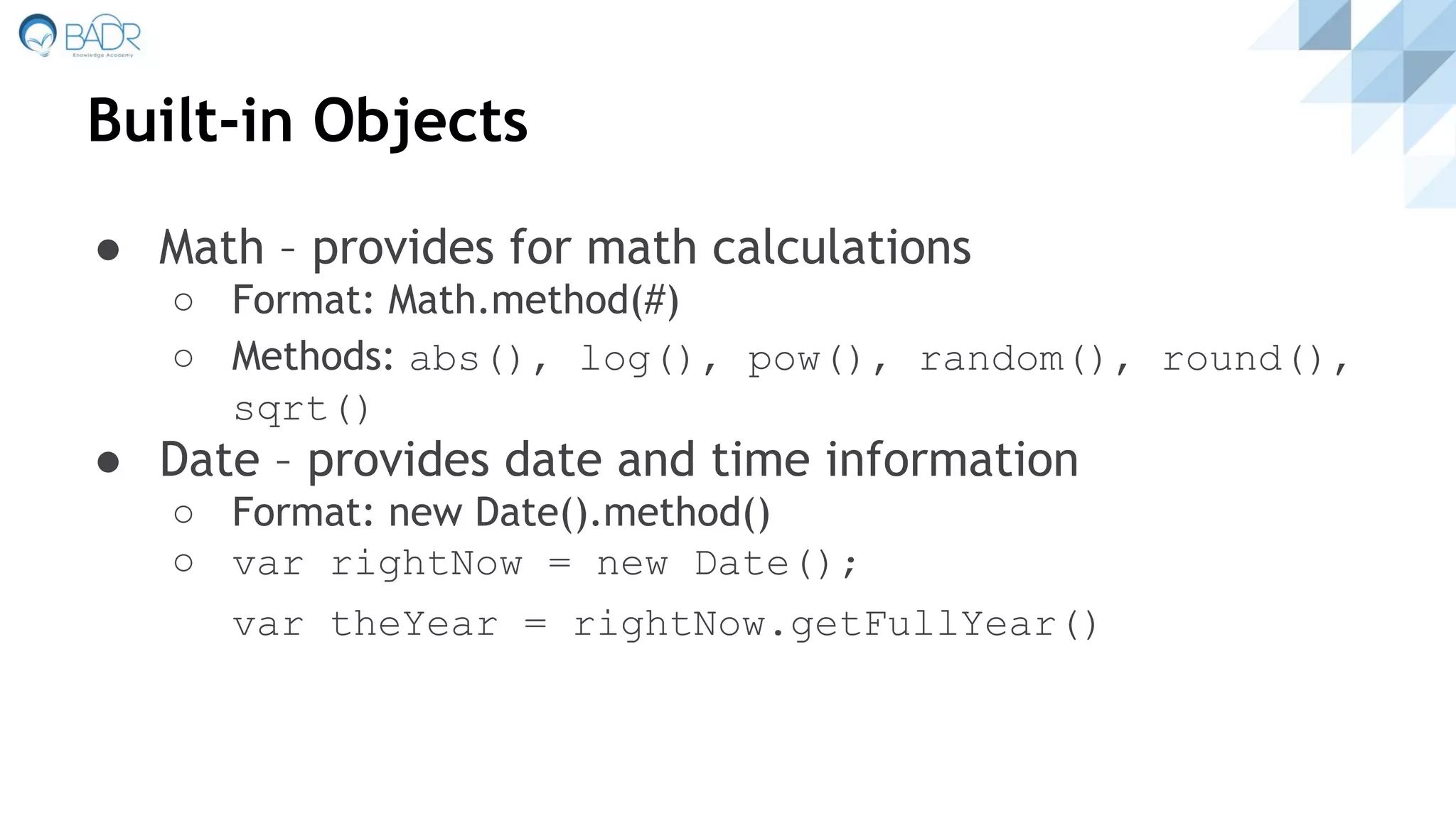
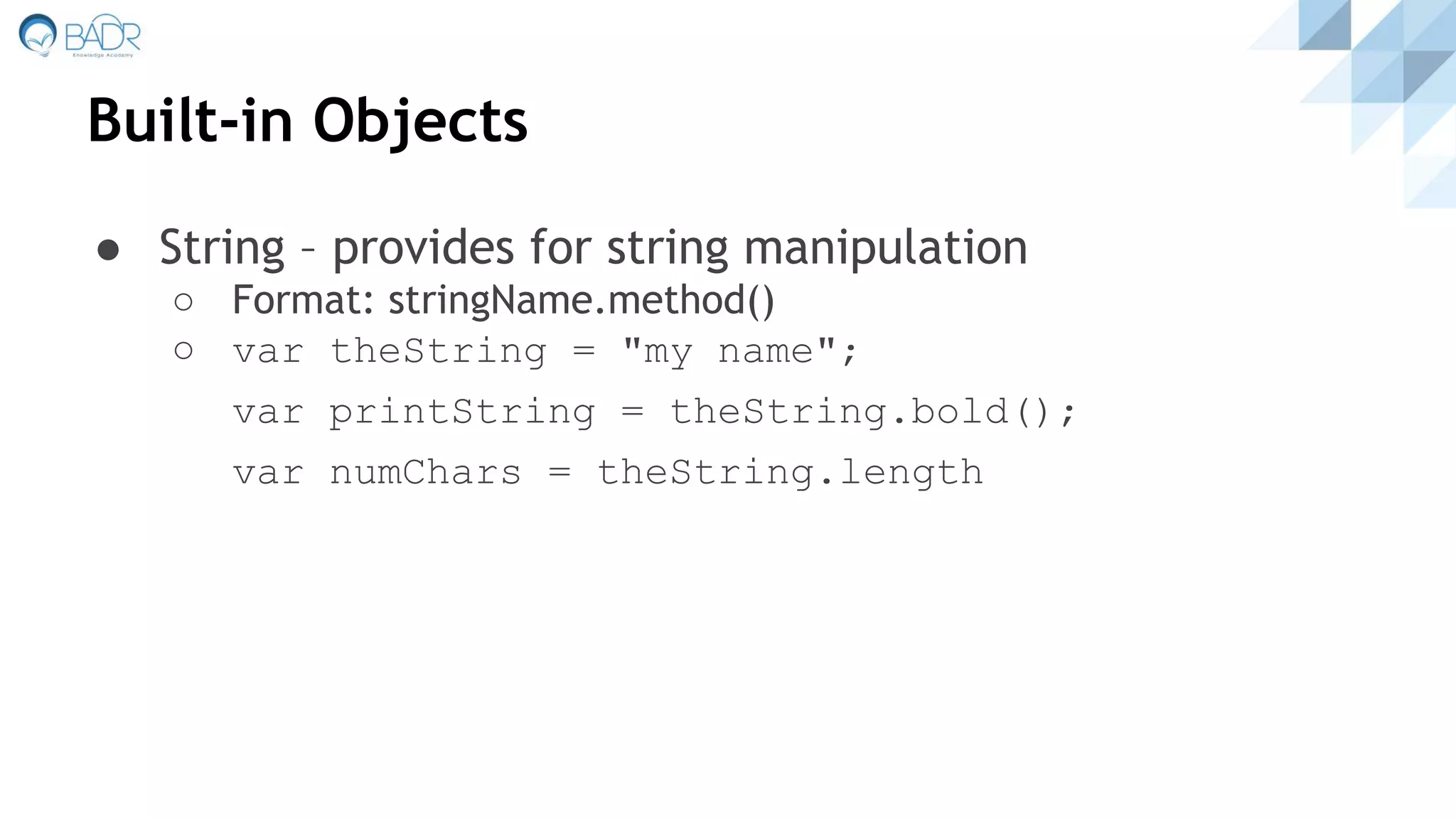
![Arrays
● Inherits from Object.
● No need to provide length to create new array.
var x = [‘a’, ‘b’, ‘c’];
x.push(‘d’);
● Methods
○ concat
○ join
○ push
○ slice
○ sort
○ splice](https://image.slidesharecdn.com/javascriptgettingstarted-160309131040/75/JavaScript-Getting-Started-20-2048.jpg)
